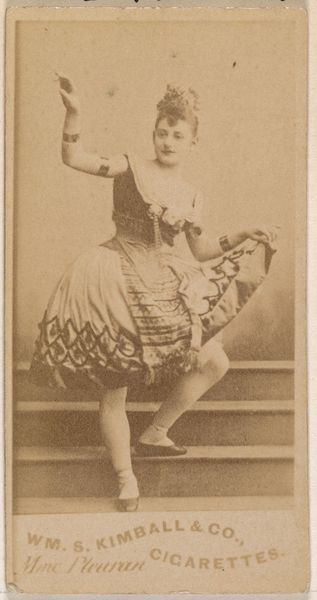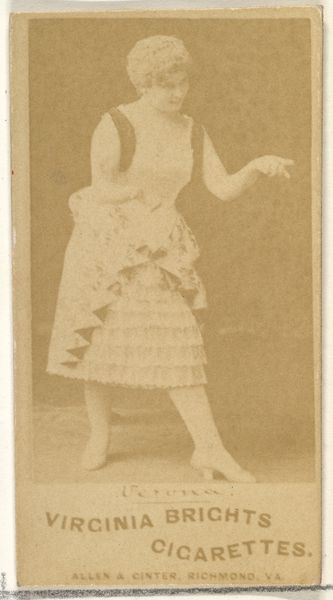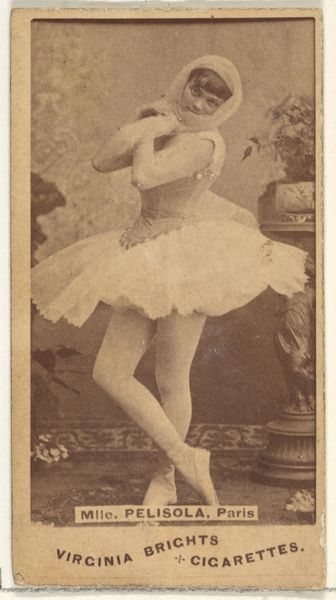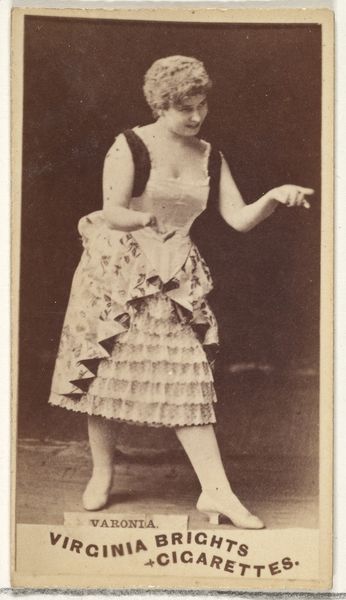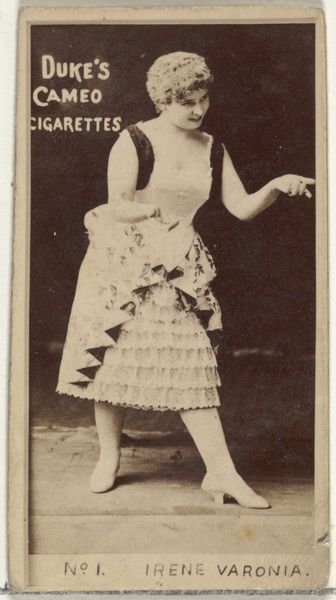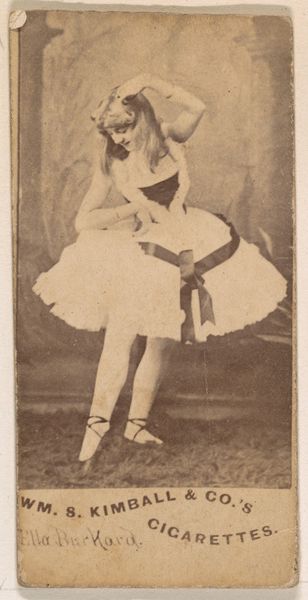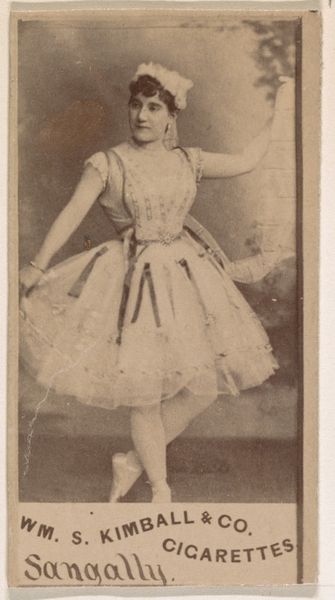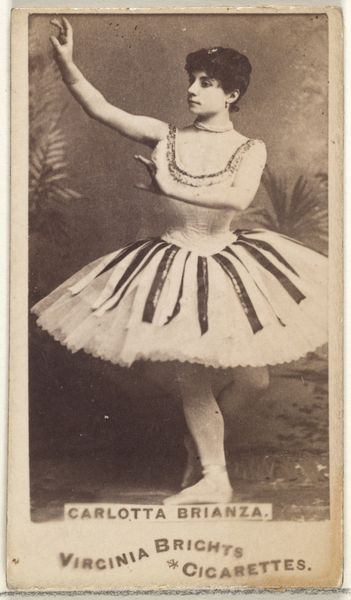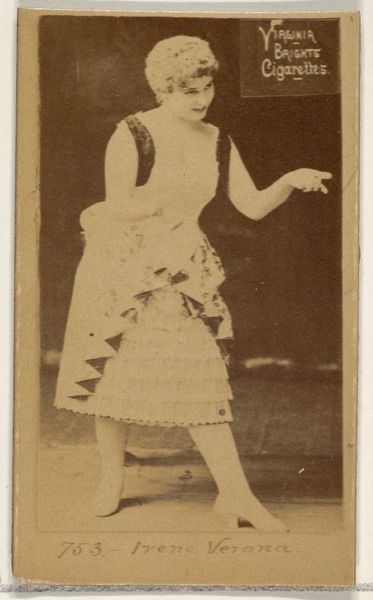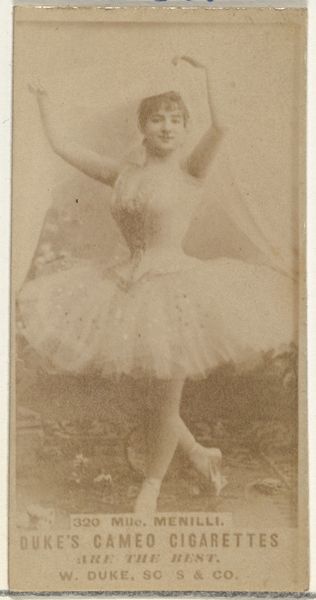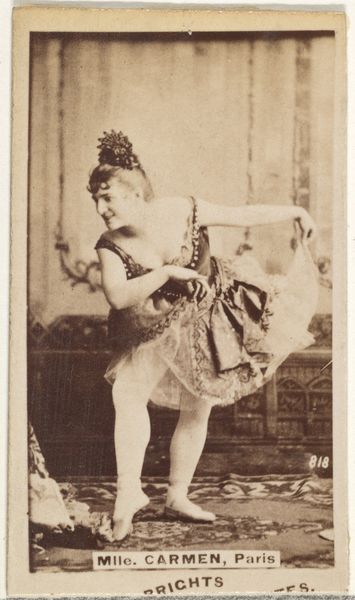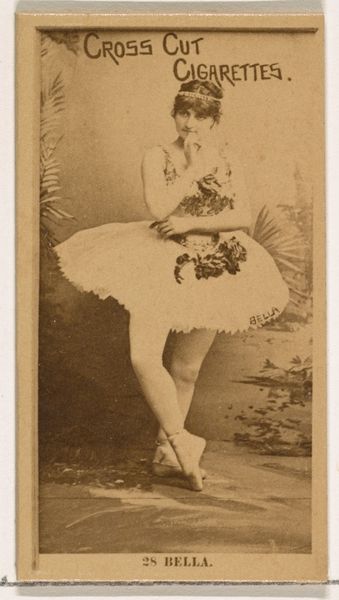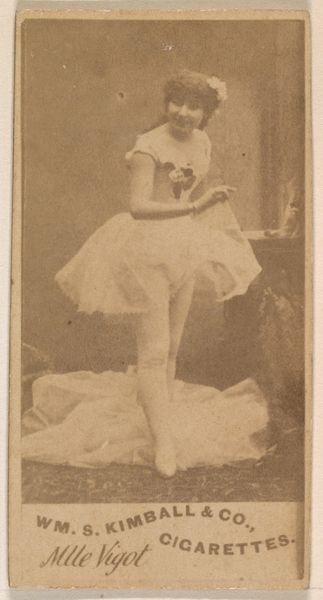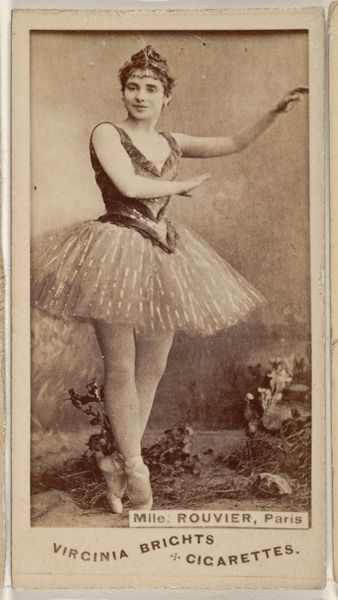
Mde. Rosi, from the Actors and Actresses series (N45, Type 8) for Virginia Brights Cigarettes 1885 - 1891
0:00
0:00
drawing, print, photography
#
portrait
#
drawing
# print
#
figuration
#
photography
Dimensions: Sheet: 2 5/8 x 1 1/2 in. (6.6 x 3.8 cm)
Copyright: Public Domain
Curator: Here we have a rather unusual item for the Met: a trade card featuring Mde. Rosi, an actress, drawn from the "Actors and Actresses" series by Allen & Ginter, dating between 1885 and 1891. These cards were originally included in packs of Virginia Brights Cigarettes. Editor: It has a certain… fragility about it. Despite the sepia tones that suggest age, the figure herself has this light buoyancy, emphasized by the frothy tutu and delicate pose. The lighting is soft and evenly distributed, too, focusing your eye on Rosi herself. Curator: Exactly. Allen & Ginter utilized photography to capture Rosi’s image, and that’s key here. This wasn't meant as "high art"; it was mass-produced, intended to be collected and traded within a burgeoning consumer culture fueled by tobacco. It reflects shifts in advertising and celebrity endorsement practices of the late 19th century. Editor: Yet, see how they carefully framed her within this little rectangle. The angle, the way the shadows fall just so—it’s all constructed to create an idealized image. Her tutu especially – look at its many carefully crafted layers. The curve of her raised arms mirrors the rounded shape of her skirt and hips. It's consciously aesthetic. Curator: Precisely, but we can’t divorce that aesthetic construction from the commodity it promotes. These cards were tools in the machinery of desire, aimed at male consumers. The romanticized image of Mde. Rosi contributed to the cultural construction of femininity, labor and performance in an industrialized context. Her likeness was a tradable item, like any raw material. Editor: I see your point, and there is a definite performative element at play both on the stage and on the card itself, and there’s even something meta to consider when we apply Barthes’ ideas about signs. However, it's her pose—one foot delicately pointed, that captivating gaze—creates this air of fantasy. Ignoring that sensation would feel reductive. Curator: Of course, the visual strategies have inherent appeal! But by digging deeper into its origins, purpose and production we get insight into the forces shaping popular culture in a way that straightforward image analysis can overlook. Editor: Ultimately, this small card packs layers of meaning, revealing just how intertwined our experience of beauty and commerce truly is. Curator: Indeed, offering us not just a portrait but a snapshot of a society in transformation.
Comments
No comments
Be the first to comment and join the conversation on the ultimate creative platform.
